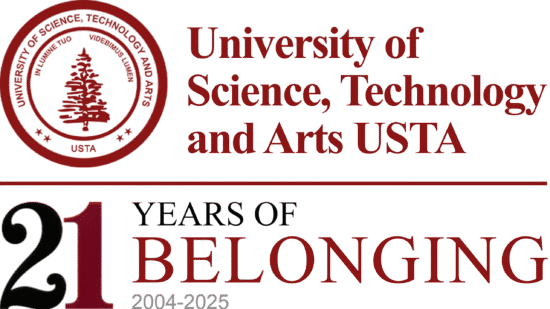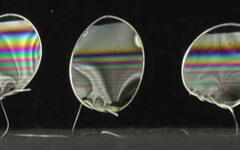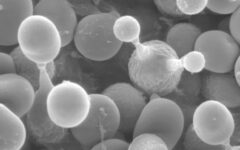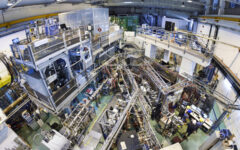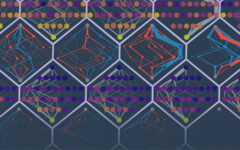Frequency modulation accelerates the research of quantum technologies
16 August 2023 2023-08-16 13:28Frequency modulation accelerates the research of quantum technologies
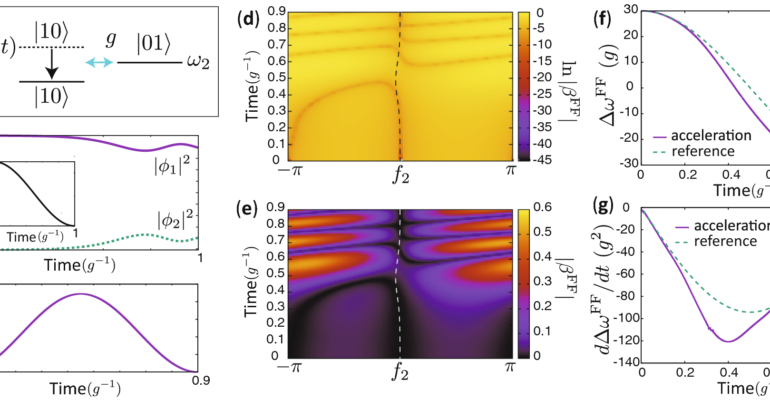
Frequency modulation accelerates the research of quantum technologies
Source: Aalto University
Summary: In quantum devices, frequency modulation is utilized in controlling interactions. A new article discusses the physics of frequency modulation in superconducting quantum circuits, ultracold atoms, nitrogen-vacancy centers in diamond and nanoelectromechanical resonators.
Many modern technological advances and devices are based on understanding quantum mechanics. Compared to semiconductors, hard disk drives or lasers, quantum devices are different in the sense that they directly harness quantum states in the operation of the device. A big goal of the field is to develop a working quantum computer envisaged to outperform traditional computers in certain difficult computational tasks. Researchers at University of Oulu and Aalto University have published a review article about physics related to quantum devices in the journal of Reports on Progress in Physics.
A central concept in quantum mechanics is that of energy level. When a quantum mechanical system, such as an atom, absorbs a quantum of energy from light, it becomes excited from a lower to a higher energy level. Changing the separation between the energy levels is called frequency modulation. In quantum devices, frequency modulation is utilized in controlling interactions, inducing transitions among quantum states and engineering artificial energy structures.
“The basis of quantum mechanical frequency modulation is known since the 1930s. However, the breakthrough of various quantum technologies in 2000s has created a need for understanding and better theoretical tools of quantum systems under frequency modulation,” says Matti Silveri, presently a postdoctoral researcher from University of Oulu.
Understanding and utilization of frequency modulation is important for developing more accurate quantum devices and faster quantum gates for the near-future small scale quantum computers. The research field of quantum devices and computing is rapidly growing and it has recently attracted also investments from major technology companies, such as, from Google, Intel, IBM and Microsoft.
“We wanted to review the recent experimental and theoretical progress with various different kinds of quantum systems under frequency modulation. We hope to accelerate the research in this field,” adds docent Sorin Paraoanu from Aalto University.
The article discusses the physics of frequency modulation in superconducting quantum circuits, ultracold atoms, nitrogen-vacancy centers in diamond and nanoelectromechanical resonators. With these platforms, energy levels can be accurately modulated with voltage, microwaves or lasers in various experimental settings. The theoretical results of the article are general and can be applied to various quantum systems.
Related Posts
Synchrotron sheds (X-ray) light on carbon chemistry at ocean surfaces
Physics of bubbles could explain language patterns
Fungal spores harness physics to launch themselves
Physics: Toward a practical nuclear pendulum
Physics explains protein unpredictability
Search
Categories
- Acoustics (1)
- Admission (14)
- Alumni (19)
- Bacteria (1)
- Behavioral Science (1)
- Biochemistry (1)
- Biochemistry Research (1)
- Biology (1)
- Biotechnology (1)
- Blog (10)
- Botany (1)
- Career (14)
- Cell Biology (1)
- Chemistry (1)
- Chemistry (1)
- Developmental Biology (1)
- Epigenetics Research (1)
- Evolutionary Biology (1)
- Fungus (1)
- Fungus (1)
- Genetics (1)
- Health (1)
- Inorganic Chemistry (1)
- Life Sciences (1)
- Marine Biology (1)
- Mating and Breeding (1)
- Microbes and More (1)
- Microbiology (1)
- Molecular Biology (1)
- Nature of Water (1)
- News (39)
- Optics (1)
- Organic Chemistry (1)
- Physics (1)
- Prions (1)
- Prions (1)
- Quantum Computing (1)
- Quantum Physics (1)
- Research (38)
- Spotlight (15)
- Student life (15)
- Student story (13)
- Technology (1)
- Thermodynamics (1)
- Ultrasound (1)
- Uncategorized (10)
- Virology (1)
- Zika Virus Research (1)
- Zoology (1)
Get the latest University of Science, Technology and Arts news
Carborane-Cluster-Wrapped Copper Cluster with Cyclodextrin-like Cavities for Chiral Recognition | Journal of the American Chemical Society #Carborane #Cluster #Cu #Cyclodextrin #Chiral #Recognition
This week in #LCSOSynthesisProblem @DuncanBrownsey challenged us with the total synthesis of Wickerol A and B by Gui and coworkers @Jinghan_Gui in @J_A_C_S. #TotalSynthesis #Chemistry
Take a look: https://www.epfl.ch/labs/lcso/wp-content/uploads/2024/06/Wickerol-A-Gui-2020.pdf
Original paper: https://pubs.acs.org/doi/10.1021/jacs.9b11838
Modified Halloysite as Catalyst for the Conversion of Hydroxymethylfurfural to Furandicarboxylic Acid: A DFT Investigation (Dario Duca and co-workers)
Topological electride of 𝑡-YCl, Yiwei Liang, Xinyan Lin, Biao Wan, Zhaopeng Guo, Xuyan Cao, Dexi Shao, Jian Sun, and Huiyang Gou #CondensedMatter #ChemicalPhysics https://go.aps.org/3VwcMZ5
G-Quadruplex mRNAs Silencing with Inducible Ribonuclease Targeting Chimera for Precision Tumor Therapy | Journal of the American Chemical Society #Quadruplex #mRNA #Silencing #Ribonuclease #Chimera #Tumor #Therapy
Polycationic Open‐Shell Cyclophanes: Synthesis of Electron‐Rich Chiral Macrocycles, and Redox‐Dependent Electronic States – Shi – Angewandte Chemie International Edition – Wiley Online Library
Perspective on the Development of Monomer Recovery Technologies from Plastics Designed to Last
A Perspective by Steffan K. Kristensen, Troels Skrydstrup et al. @AarhusUni_int
🔓 Open access in ACS Organic & Inorganic Au 👉 https://go.acs.org/9Gv
A fantastic collection of activities to provoke and deepen mathematical thinking. ‘Thinkers’ will enhance the teaching and learning of mathematics for new and experienced teachers, and for learners from 8 to 18 (and beyond). http://bit.ly/ATMthinkers.
ICYMI, from our Emerging Investigators collection 🎉
‘Gold-catalyzed benzannulations of 2-alkenylindoles with alkynes: a protecting-group-free regioselective approach to carbazoles’ by Youliang Wang at Xi’an Jiaotong University.
Catalyst-Free α-trans-Selective Hydroboration and (E)-Selective Deuterated Semihydrogenation of Alkynyl Sulfones (@JOC_OL): https://pubs.acs.org/doi/10.1021/acs.joc.3c02833.
https://www.organic-chemistry.org/abstracts/lit3/936.shtm
A simple continuous hydrogenation of alkenes and alkynes with in situ generated diimide
Molecular Triplet Generation Enabled by Adjacent Metal Nanoparticles | Journal of the American Chemical Society #Triplet #Generation #Metal #Nanoparticles
Photonic implementation of the quantum Morra game, Andrés Ulibarrena, Alejandro Sopena, Russell Brooks, Daniel Centeno, Joseph Ho, Germán Sierra, and Alessandro Fedrizzi #Quantum #QuantumInformation https://go.aps.org/45eWCru
We’re excited to share our latest preprint on @ChemRxiv! The talented @Zhipengluu developed a new photo-active hypervalent iodine reagent for the diversification of aliphatic C–H bonds. Check it out: https://chemrxiv.org/engage/chemrxiv/article-details/665755b321291e5d1d8dfdbf
Now in @InorgChem! Read the article featuring pyrazine (pz)-bridged dinuclear Ru2(II,II) and Ru2(III,III) complexes and pz-containing mononuclear Ru(II) and Ru(III) complexes, which were afforded through the reactions of the (μ-Cl)3 Ru(II,II) complex: https://go.acs.org/9Gq
Long-Range Gating in Single-Molecule One-Dimensional Topological Insulators | Journal of the American Chemical Society @ColumbiaScience @Columbia @ChemColumbia @APAMMSECU #Gating #Topological #Insulators
Diastereo- and Enantioselective Construction of Stereochemical Arrays Exploiting Non-Classical Hydrogen Bonding in Enolborates (@ChemEurJ): https://chemistry-europe.onlinelibrary.wiley.com/doi/10.1002/chem.202401485.
A Review on the Recent Advances in Developing Radical Methods for the Synthesis of Aliphatic Sulfonyl Fluorides by Zhong-Yan Cao, Saihu Liao, and co-workers
